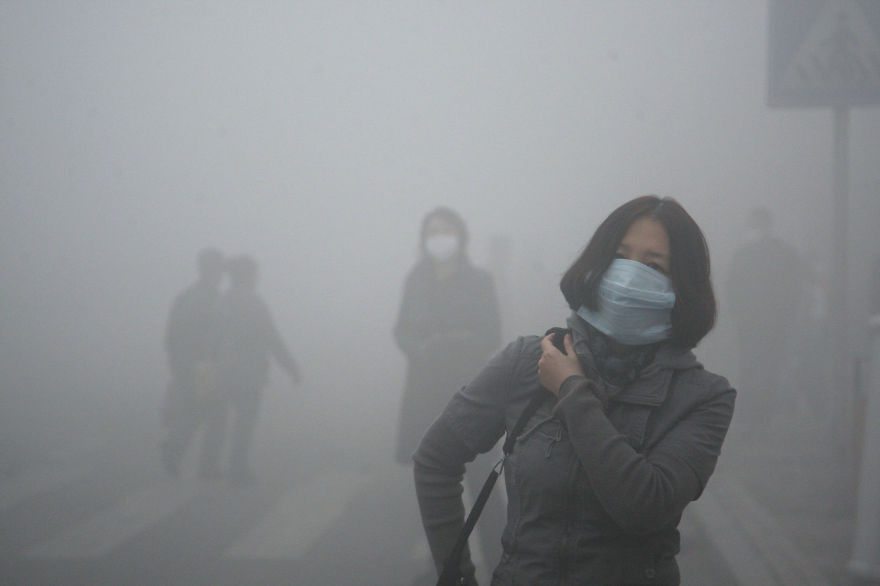Why We Need Stronger PM2.5 Standards, Especially Because of COVID-19
By: Sidni Smith (Summer 2020 Legal Intern and Summer 2020 MPH Intern)
Living means breathing. Gasp takes action to ensure that all Alabamians are accessing clean, healthy air to breathe that will result in better health outcomes and increased quality of life. On an annual basis, Gasp comments on the Ambient Air Monitoring Network Plans provided by JCDH and ADEM regarding any intended changes for the upcoming year. After the public comment period, EPA must approve the final Plans.
For 2020 in particular, COVID-19 has posed a greater threat to communities already in crisis—communities plagued by toxic air and predisposed to health conditions as a result of environmental issues, geographical bounds, socioeconomic disparities, and genetics. According to the CDC, “the most at-risk groups for severe illness from COVID-19 are people 65 years and older, people who live in a nursing home or long-term care facility, and people of all ages with underlying medical conditions… [such as] people with chronic lung disease or moderate to severe asthma… people who are immunocompromised, people with severe obesity… [and] people with diabetes…” Simply put, communities trapped in toxic pits are also one of the most at-risk groups.
The greatest issue thriving at the intersection of legacy pollution and the current pandemic is that communities already dying, are dying at increased rates. Articles have pointed to the parallel between increased rates of death due to COVID-19 and the disparate impact on African-American communities. An ongoing Harvard study also shows a correlation between PM2.5 exposure and higher COVID-19 death rates. This same study revealed that “an increase of only 1 μg/m3 in long-term average PM2.5 is associated with a statistically significant 8% increase in the COVID-19 death rate.” Unfortunately, if a person dies, there is no certainty as to the cause of death due either to the pandemic or the pollution. Perhaps, it’s safe to say both, so stricter regulations on PM2.5 are of greater necessity during this time.
As a solution to current circumstances and in hopes of effectuating a lasting regulatory change, it is imperative to strengthen the PM2.5 standard. Why? PM 2.5 poses the greatest risk to health. PM2.5 are fine particles only viewable at microscopic level that are linked to severe respiratory illnesses and many other health issues. EPA has proposed and maintained the current annual standard level of 12.0 μg/m3 (micrograms per cubic meter) for PM2.5. In the EPA’s January 2020 Review for PM standards, the data that accounted for alternative standards revealed “…long-term PM2.5 exposures are estimated to be associated with as many as 45,000 total deaths and 14,600 IHD [ischemic heart disease] deaths annually… [and] [t]he majority of this estimated risk is associated with annual average PM2.5 concentrations from 10 to 12 μg/m3 (Figure 3-12).” The data also captured that “air quality adjusted to meet alternative annual standards with lower levels is associated with reductions in estimated IHD mortality risk across the 30 study areas (i.e., 7 to 9% reduction for a level of 11.0 μg/m3; 14 to 18% reduction for a level of 10.0 μg/m3; 21 to 27% reduction for a level of 9.0 μg/m3) (Table 3-8 and Figure 3-12).”
So, let’s break this down and recap. The Harvard study mentioned earlier in this article showed that for every 1 μg/m3 PM2.5 increase there is also an 8% increase in COVID-19 deaths. The EPA’s Review showed that a reduction to a level of 9 μg/m3 for PM2.5 would yield a 21 to 27% death reduction. For easy math, let’s average “21 to 27%” to 24% (21+27=48, and 48/2 =24). The data is consistent:
If there is an associated 8% increase in COVID-19 deaths for every 1 μg/m3 increase in PM2.5, is there an 8% decrease in COVID-19 deaths for every 1 μg/m3 in PM2.5?
Let’s predict so.
The current PM2.5 standard level is 12 μg/m3.
If we reduce the current 12 μg/m3 standard to 9 μg/m3, that is a reduction of 3 μg/m3.
3 μg/m3 times 8% decrease in COVID-19 deaths is 24%.
By reducing the standard level of PM2.5 to 9 μg/m3, I propose a 24% reduction in COVID-19 deaths.
Don’t forget that the EPA’s Review also revealed that a reduction to a level of 9 μg/m3 would lead to an average of a 24% death reduction.
In conclusion, it is clear that EPA must reduce the current standard level of 12 μg/m3 to 9 μg/m3, not only due to the current COVID-19 circumstances, but because it is the right thing to do for the health of the public.


